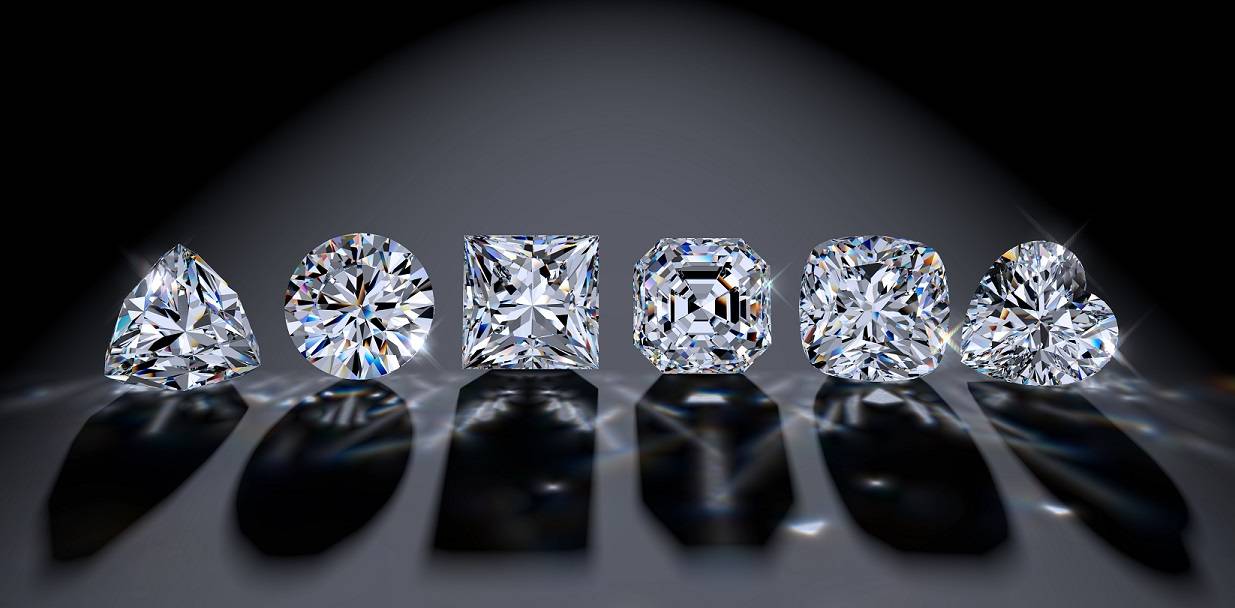IDENTIFYING THE BEST DIAMONDS
Table, depth, crown & pavilion angles

Importance Of The Diamond Table
The table is the name given for the largest facet of the diamond found on the very top surface. Tables are measured in percentages. Dividing the width of the table by the overall width of the diamond, you will find the table percentage.
These percentages are helpful when you’re working with diamonds of various carat sizes, because you will be able to find the most ideal cut at any size.
Preferred Percentage Table & Depth

Essentially, anything between 54 and 61 percent is considered preferred. Within this range the table is an excellent size and allows light to enter the stone at the appropriate angles to reflect and refract off the smaller facets below.

Typically, a table percentage between 54 and 58 tends to command a slightly higher value, assuming other aspects of the diamond are optimal.
In the case of a much larger or smaller table ratio, the light entering the stone doesn’t hit the ideal angles for maximum sparkle and brilliance.
Importance Of The Diamond Depth
The depth of a diamond is its height (in millimeters) measured from the culet to the table. In a grading report, there are normally two measurements of depth – the first is the actual depth measurement in millimeters (shown under ‘measurements’ at the top of a grading report).
The second is the depth percentage, which shows how deep the diamond is in relation to its width. In the case of a round cut diamond the ideal depth is between 59 and 63%.

In conjunction with the table, optimum depth inherently ensures the correct angles and intensity of light reflection in to and out of the diamond.
You may alternatively see the pavilion depth shown in a certificate, also expressed as a percentage. Please see more about pavilion angles below.
It is important to appreciate that, in assessing and evaluating any diamond, it is not just one or two key grading criteria that determine it's beauty and value. It is the combination of multiple factors which conspire to create the 'perfect' stone - and determine it's market value.

Importance Of Crown Angle
Crown angle is the measured angle between the bezel facet plane and the table plane. The average of eight crown angle measurements is reported to the nearest half of a degree (0.5°).
Crown angle can significantly affect a diamond’s face-up appearance. Generally, crown angles from 32 to 37.5 degrees produce attractive, bright and fiery diamonds if combined with the right table percentage and pavilion angle.

Importance Of Pavilion Angle
Pavilion angle is the measured angle between the pavilion main facet plane and the table plane. The average of eight pavilion angle measurements is reported to the nearest 0.2 degrees.
Subtle pavilion angle differences can have a significant impact on the diamond’s face-up appearance. For instance, steep pavilion angles can produce dark areas under the diamond’s table. Shallow pavilion angles can make the diamond appear foggy.
For round cut diamonds the ideal pavilion angle is between 40.5 and 42.8 degrees.
For emerald and rectangular cuts, the perfect angle is 45.05 and an acceptable range is 43.3-46.8 degrees.



